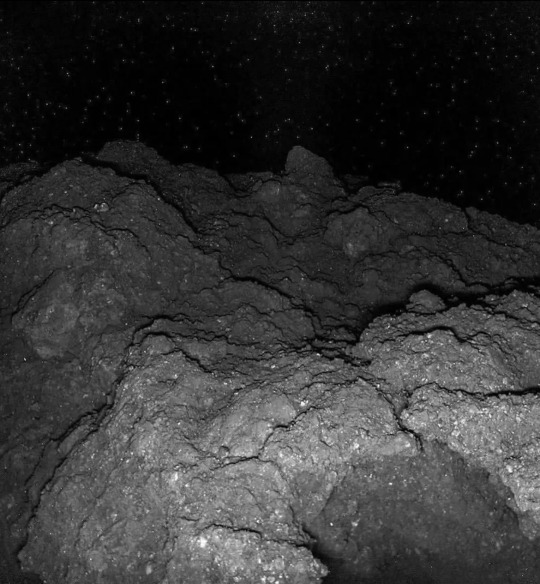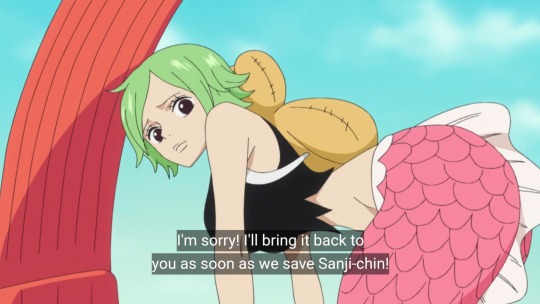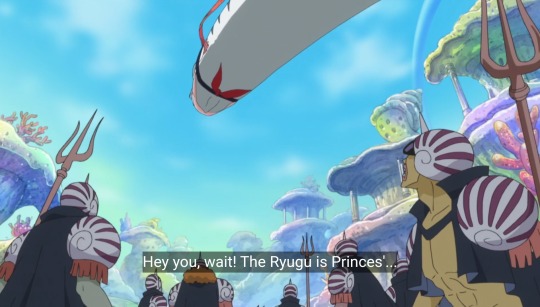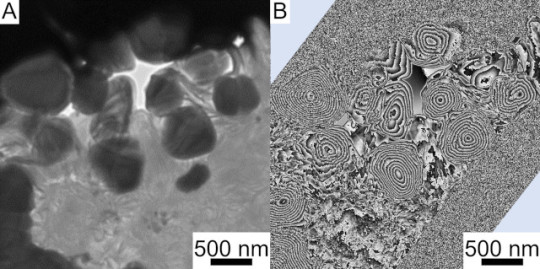#Ryugu
Explore tagged Tumblr posts
Text
Asteroids that orbit close to the Earth inevitably cause us some anxiety due to the even remote possibility of a collision. But their proximity also offers ample opportunities to learn more about the universe. Ryugu, a 900-meter diameter asteroid in the Apollo belt, has recently proven useful in our search for signs of life's precursors elsewhere in our solar system. A team of researchers at Kyoto University have found evidence of salt minerals in samples recovered from Ryugu during the initial phase of Japan's Hayabusa2 mission. The discovery of these deposits, containing sodium carbonate, halite, and sodium sulfates, suggest that liquid saline water once existed within a parent body of Ryugu.
Continue Reading.
87 notes
·
View notes
Text

The surface of the asteroid Ryugu, as captured by the Japanese’s spacecraft Hayabusa2 (2018).
#asteroid#space#outer space#nasa#space photography#jaxa#Hyabusa2#ryugu#photography#nature photography#night sky#space exploration
174 notes
·
View notes
Text



i love how they're the PRINCES of this kingdom and they're so unphased at their SHIP being STOLEN right in front of them like the soldiers are more concerned than the royalty are
#they're so chill about their ride home being sniped#and by pirates too like#respect honesty#min watches one piece#one piece#op#fishman Island#camie#sanji#3 princes#idk.how to tag them help#fukaboshi#ryuboshi#manboshi#okay found their names#ohhh wait one of them arent here#idk who is who tho so oopsies#ryugu
140 notes
·
View notes
Text










#SpaceHopper#asteroid explorer#asteroid#gravity#hopping motion#space exploration#ETH Zurich#Switzerland#LunarLeaper#Ryugu#Mobile Asteroid Surface Scout#european space agency#AstroForge#Valerio Schelbert#space#robot#astronaut#technology
6 notes
·
View notes
Text

An article published in the journal "Nature Communications" reports the results of tests conducted on samples from the asteroid Ryugu brought back to Earth by the Japanese space agency JAXA's Hayabusa 2 space probe. A team of researchers led by Professor Yuki Kimura of Hokkaido University found traces of the effects probably caused by the bombardment of micrometeorites.
In particular, the technique called electron holography made it possible to discover that the tiny grains called framboids, composed of magnetite, completely lost the magnetic properties they normally have. According to Professor Kimura, this type of study can also be useful for estimating the degradation caused by interplanetary dust on spacecraft.
13 notes
·
View notes
Text
#science#science communication#scicomm#stem#science education#science blog#space#physics#Ryugu#biology#evolutionarybiology#evolutionary biology#space travel#space exploration
4 notes
·
View notes
Photo




https://solarsystem.nasa.gov/missions/hayabusa-2/in-depth/
2 notes
·
View notes
Text
SciTech Chronicles. . . . . . . . .Feb 18th, 2025
#Ryugu#salt#precipated#sodium#solar-wind#beryllium-10#interstellar#heliosphere#LIDAR#Zapotec#Guiengola#Tehuantepec#AI#decode#aphasia#converter#Ba3SiO5#ruthenium#ammonia#mixed-anion
0 notes
Link
Space Nuts Episode: Ryugu's Microbial Mystery, Martian Moon Origins, and Galactic Collisions Join Andrew Dunkley and Professor Fred Watson as they explore the latest cosmic revelations. From unexpected microbial contamination of Richie asteroid samples to a groundbreaking theory on the formation of Mars's moons, and the first results from a new instrument on the William Herschel Telescope, this episode is packed with stellar insights and astronomical wonders. Episode Highlights: - Richie Asteroid Contamination: Delve into the challenges of keeping extraterrestrial samples free from Earth's microbes. Despite stringent sterilisation efforts, Richie samples returned by Hayabusa2 show signs of terrestrial contamination, raising questions about planetary protection protocols. - Martian Moons' New Origin Theory: Discover a fresh perspective on how Phobos and Deimos may have formed. A new model suggests that these moons originated from debris of an asteroid that broke apart due to Mars's gravitational forces, offering an alternative to previous impact and capture theories. - Galactic Collisions Unveiled: Explore the first findings from the WEAVE instrument on the William Herschel Telescope. By studying Stefan's Quintet, astronomers reveal the staggering speeds of shock waves from colliding galaxies, shedding light on cosmic interactions and future Milky Way-Andromeda collision scenarios. For more Space Nuts, including our continually updating newsfeed and to listen to all our episodes, visit our website. Follow us on social media at SpaceNutsPod on facebook, X, YouTube, Tumblr, Instagram, and TikTok. We love engaging with our community, so be sure to drop us a message or comment on your favourite platform. For more Space and Astronomy News Podcasts, visit our HQ at www.bitesz.com. Become a supporter of this podcast for extended commercial-free episodes and more. Visit our Support page for options: spacenutspodcast.com/about Stay curious, keep looking up, and join us next time for more stellar insights and cosmic wonders. Until then, clear skies and happy stargazing. 00:00 - Andrew Dunkley: Coming up on this edition of Space Nuts 01:15 - This episode will be officially released two days after your 800th birthday 02:29 - Justin Jackson says Ryugu samples show effort to keep them clean has failed 12:12 - If that can happen in a room that's designed not to allow it 12:47 - New theory put forward about origin of moon's phobos and Deimos 21:22 - Andrew Dunkley says spherical potatoes could be useful in space missions 22:46 - Fred looks at an instrument connected to the William Herschel telescope 26:45 - Professor Gavin Dalton has been working on the William Herschel Telescope 31:30 - We've got similar collision speeds as Andromeda. ✍️ Episode References Imperial College London [imperial.ac.uk](https://www.imperial.ac.uk/) Meteoritics and Planetary Science Journal [wiley.com](https://onlinelibrary.wiley.com/journal/19455100) phys.org [phys.org](https://phys.org/) Durham University [durham.ac.uk](https://www.dur.ac.uk/) NASA Spaceflight [nasaspaceflight.com](https://www.nasaspaceflight.com/) JAXA (Japanese Aerospace Exploration Agency) [jaxa.jp](https://www.jaxa.jp/) William Herschel Telescope [ing.iac.es](http://www.ing.iac.es/astronomy/telescopes/wht/) Isaac Newton Group of Telescopes [ing.iac.es](http://www.ing.iac.es/)
#and#asteroid#astronomy#collisions#contamination#deimos#exploration#galactic#herschel#mars#microbial#moons#news#phobos#planetary#ryugu#samples#space#telescope#william
0 notes
Text
0 notes
Text
Muestra del asteroide Ryugu fue colonizada rápidamente por vida terrestre a pesar del estricto control de contaminación
Los informes sobre microorganismos encontrados en meteoritos condríticos han alimentado durante mucho tiempo los debates sobre la llegada de vida extraterrestre a la Tierra y, posiblemente, como un origen de la vida aquí.
La panspermia es la hipótesis de que la vida puede sobrevivir a la transferencia entre cuerpos planetarios como una vía secundaria para que la vida se inicie en los planetas de todo el sistema solar. El descubrimiento de vida extraterrestre en asteroides o en el interior de meteoritos tendría profundas implicaciones para la comprensión de los orígenes y la distribución de la vida en el…
0 notes
Text
Dünya'mızın Diğer Mini Ay'ları
Dünya’mızın Diğer Mini Ay’ları Bilim insanları “Mini Ay ya da Yarı Ay” olarak bilinen, Dünya’mızın en yakın kozmik yoldaşlarının Güneş Sistemi’mizin geçmişine ait gizler barındırabileceğini düşünüyorlar. Dünya’mızın Diğer Mini Ay’ları Bilim insanları hala Güneş Sistemi’mizle ilgili sırları çözmeye çalışıyorlar. Bunun için de her türlü uzay taşına yöneliyorlar. Bu çabalar meyvelerini vermeye…
#asteroit#asteroit Ryugu#Ay#dünya#Dünyamızın Diğer Mini Ay&039;ları#JAXA#Mini Ay#Mini Ay ya da Yarı Ay#Ryugu#uzay ajansı#uzay ajansı JAXA#Yarı Ay
0 notes
Text

The surface of the asteroid Ryugu taken by the Japanese spacecraft Hayabusa-2. That pitch black background is so scary.
—
162173 Ryugu, provisional designation 1999 JU3, is a near-Earth object and a potentially hazardous asteroid of the Apollo group.
It measures approximately 900 metres (3,000 ft) in diameter and is a dark object of the rare spectral type Cb, with qualities of both a C-type asteroid and a B-type asteroid.
On 27 June 2018, the Japanese spacecraft Hayabusa2 arrived at the asteroid.
After making measurements and taking samples, Hayabusa2 left Ryugu for Earth on 13 November 2019 and returned the sample capsule to Earth on 5 December 2020.
The samples showed the presence of organic compounds, such as uracil (one of the four components in RNA) and vitamin B3.
#Ryugu#asteroid#Hayabusa-2#space#Apollo asteroid#Japan Aerospace Exploration Agency (JAXA)#JAXA#Earth#uracil#vitamin B3
2 notes
·
View notes
Link
Space Nuts Episode 469: Ryugu Revelations and Celestial Mysteries Join Andrew Dunkley and Professor Fred Watson in this enthralling episode of Space Nuts, where they delve into the latest astronomical discoveries and cosmic stories. From the secrets of asteroid Ryugu to the mysterious demise of the Arecibo Observatory, this episode is packed with fascinating insights and stellar discussions. Episode Highlights: - Ryugu's Magnetic Mysteries: Uncover new findings from the Ryugu asteroid samples, revealing insights into the magnetic fields of the outer solar system. Explore how these discoveries might reshape our understanding of planetary formation and the solar nebula. - Arecibo's Tragic End: Learn about the sad fate of the iconic Arecibo Observatory and the invisible issues that led to its collapse. Discover the plans for transforming this historic site into an education centre for future generations. - Venusian Impact Crater Discovery: Dive into the intriguing discovery of a massive impact crater on Venus, revealing unexpected similarities with ice moons like Callisto and Europa. Delve into the theories that suggest a past where Venus had a lava-covered surface. For more Space Nuts, including our continually updating newsfeed and to listen to all our episodes, visit our website. Follow us on social media at SpaceNutsPod on facebook, X, YouTube, Tumblr, Instagram, and TikTok. We love engaging with our community, so be sure to drop us a message or comment on your favourite platform. For more Space and Astronomy News Podcasts, visit our HQ at www.bitesz.com. Become a supporter of this podcast: https://www.spreaker.com/podcast/space-nuts/support. Stay curious, keep looking up, and join us next time for more stellar insights and cosmic wonders. Until then, clear skies and happy stargazing. 00:00 - This is Space Nuts. Thank you for joining us 00:35 - Professor Fred Watson discusses Venus on this episode of space nuts 02:45 - Russia put 53 satellites into orbit in one launch the other day 05:17 - Scientists have found no sign of a preserved magnetic field in Ryugu samples 14:36 - Andrew Dunkley with Professor Fred Watson studying Ryugu asteroid sample 15:21 - The Arecibo Observatory in Puerto Rico collapsed in 2020 23:13 - National Science foundation says the building will be turned into an education centre 24:37 - Fred Call says Venus' craters are much younger than similar craters elsewhere 32:53 - Yes. Isn't that amazing? That's really big pickup. Indeed. Um, Fred mentioned it. Yeah. 33:03 - Please leave a review if you listen to us through whatever platform 33:56 - All right, so, yeah, Fred Watson, astronomer at large
#arecibo-observatory#asteroid-impact#bennu#callisto#europa#hayabusa2#magnetic-field#oneweb#osiris#outer#rex#ryugu#satellite-launch#solar#solar-nebula#space-science#spacex#system#tesserae#venus-craters
1 note
·
View note
Text




A new birthplace for asteroid Ryugu
In December 2020 the space probe Hayabusa 2 brought samples of asteroid Ryugu back to Earth. Since then, the few grams of material have been through quite a lot. After initial examinations in Japan, some of the tiny, jet-black grains traveled to research facilities around the world. There they were measured, weighed, chemically analyzed and exposed to infrared, X-ray and synchroton radiation, among other things. At the MPS, researchers examine the ratios of certain metal isotopes in the samples, as in the current study. Scientists refer to isotopes as variants of the same element that differ only in the number of neutrons in the nucleus. Investigations of this kind can help to understand where in the Solar System Ryugu was formed.
Ryugu's journey through the Solar System
Ryugu is a near-Earth asteroid: Its orbit around the Sun crosses that of Earth (without risk of collision). However, researchers assume that, like other near-Earth asteroids, Ryugu is not native to the inner Solar System, but travelled there from the asteroid belt located between the orbits of Mars and Jupiter. The actual birthplaces of the asteroid belt population are probably even further away from the Sun, outside the orbit of Jupiter.
Ryugu's “family relations” can help shed light on its origin and further evolution. To what degree does Ryugu resemble the representatives of well-known classes of meteorites? These are fragments of asteroids that have made their way from space to Earth. Investigations in recent years have yielded a surprise: Ryugu fits into the large crowd of carbon-rich meteorites, the carbonaceous chondrites, as expected. However, detailed studies of its composition assign it to a rare group: the so-called CI chondrites. These are also known as Ivuna-type chondrites, named after the Tanzanian location where their best-known representative was found. In addition to the Ivuna chondrite itself, only eight others of these exotic specimens have been discovered to date. As their chemical composition is similar to that of the Sun, they are considered to be particularly pristine material that was formed at the outermost edge of the Solar System. “So far, we had assumed that Ryugu's place of origin is also outside Saturn's orbit,” explains MPS scientist Dr. Timo Hopp, co-author of the current study, who has already led earlier investigations into Ryugu's isotopic composition.
The latest analyses by the Göttingen scientists now paint a different picture. For the first time, the team has investigated the ratios of nickel isotopes in four samples of the asteroid Ryugu and six samples of carbonaceous chondrites. The results confirm the close relationship between Ryugu and the CI chondrites. However, the idea of a common birthplace at the edge of the Solar System is no longer compelling.
A missing ingredient
What had happened? Until now, researchers had understood carbonaceous chondrites as mixtures of three “ingredients” that can even be seen with the naked eye in cross-sections. Embedded in fine-grained rock, round, millimeter-sized inclusions as well as smaller, irregularly shaped inclusions are densely packed together. The irregular inclusions are the first material to have condensed into solid clumps in the hot gas disk that once orbited the Sun. The round silicate-rich chondrules formed later. Until now, researchers have attributed differences in the isotopic composition between CI chondrites and other groups of carbonaceous chondrites to different mixing ratios of these three ingredients. CI chondrites, for example, consist predominantly of fine-grained rock, while their siblings are significantly richer in inclusions. However, as the team describes in the current publication, the results of the nickel measurements do not fit into this scheme.
The researchers' calculations now show that their measurements can only be explained by a fourth ingredient: tiny iron-nickel grains, which must also have accumulated during the formation of the asteroids. In the case of Ryugu and the CI chondrites, this process must have been particularly efficient. “Completely different processes must have been at work in the formation of Ryugu and the CI chondrites on the one hand and the other groups of carbonaceous chondrites on the other,” says Fridolin Spitzer from the MPS, first author of the new study, summarizing the basic idea.
According to the researchers, the first carbonaceous chondrites began to form around two million years after the formation of the Solar System. Attracted by the gravitational force of the still young Sun, dust and the first solid clumps made their way from the outer edge of the gas and dust disk into the inner Solar System, but encountered an obstacle along the way: the newly forming Jupiter. Outside its orbit, the heavier and larger clumps in particular accumulated - and thus grew into carbonaceous chondrites with their many inclusions. Towards the end of this development, after around two million years, another process gained the upper hand: under the influence of the Sun, the original gas gradually evaporated outside Jupiter's orbit leading to the accumulation of primarily dust and iron-nickel grains. This led to the birth of the CI chondrites.
“The results surprised us very much. We had to completely rethink - not only with regard to Ryugu, but also with regard to the entire group of CI chondrites,” says Dr. Christoph Burkhard from the MPS. The CI chondrites no longer appear as distant, somewhat exotic relatives of the other carbonaceous chondrites from the outermost edge of the Solar System, but rather as younger siblings that may have formed in the same region, but through a different process and later. “The current study shows how crucial laboratory investigations can be in deciphering the formation history of our Solar System,” says Prof. Dr. Thorsten Kleine, Director of the Department of Planetary Sciences at the MPS and co-author of the study.
TOP IMAGE: About two million years after the formation of the Solar System, the first carbonaceous chondrites made of dust, chondrules, early condensates and iron-nickel grains agglomerated outside the orbit of the still young Jupiter. About two million years later, the CI chondrites were formed by photoevaporation. They incorporated a particularly large number of iron-nickel grains. Credit MPS (Fridolin Spitzer)
CENTRE IMAGE: The near-Earth asteroid Ryugu measures about 900 meters in diameter. © JAXA, University of Tokyo, Kochi University, Rikkyo University, Nagoya University, Chiba Institute of Technology, Meiji University, Aizu University, AIST
LOWER IMAGE: Microscopic image of rock material from the asteroid Ryugu. The black grains are only a few millimeters in size. © MPS
BOTTOM IMAGE: Cross-section of the carbonaceous chondrite “Allende”, which fell over Mexico in 1969. Round and irregularly shaped inclusions are clearly visible. © Shiny Things (https://commons.wikimedia.org/wiki/File:Allende_meteorite.jpg), „Allende meteorite“, https://creativecommons.org/licenses/by/2.0/legalcode
1 note
·
View note
